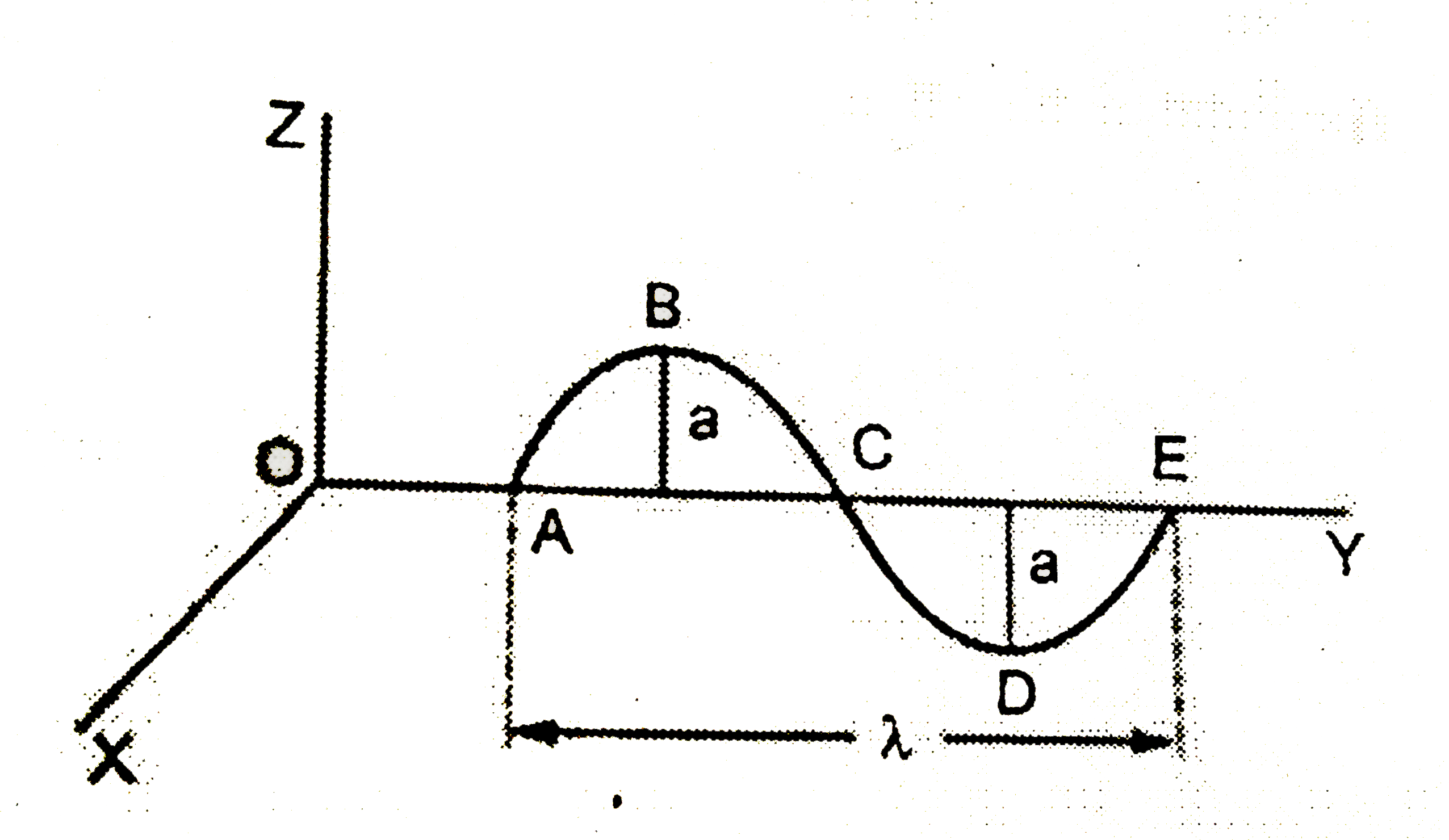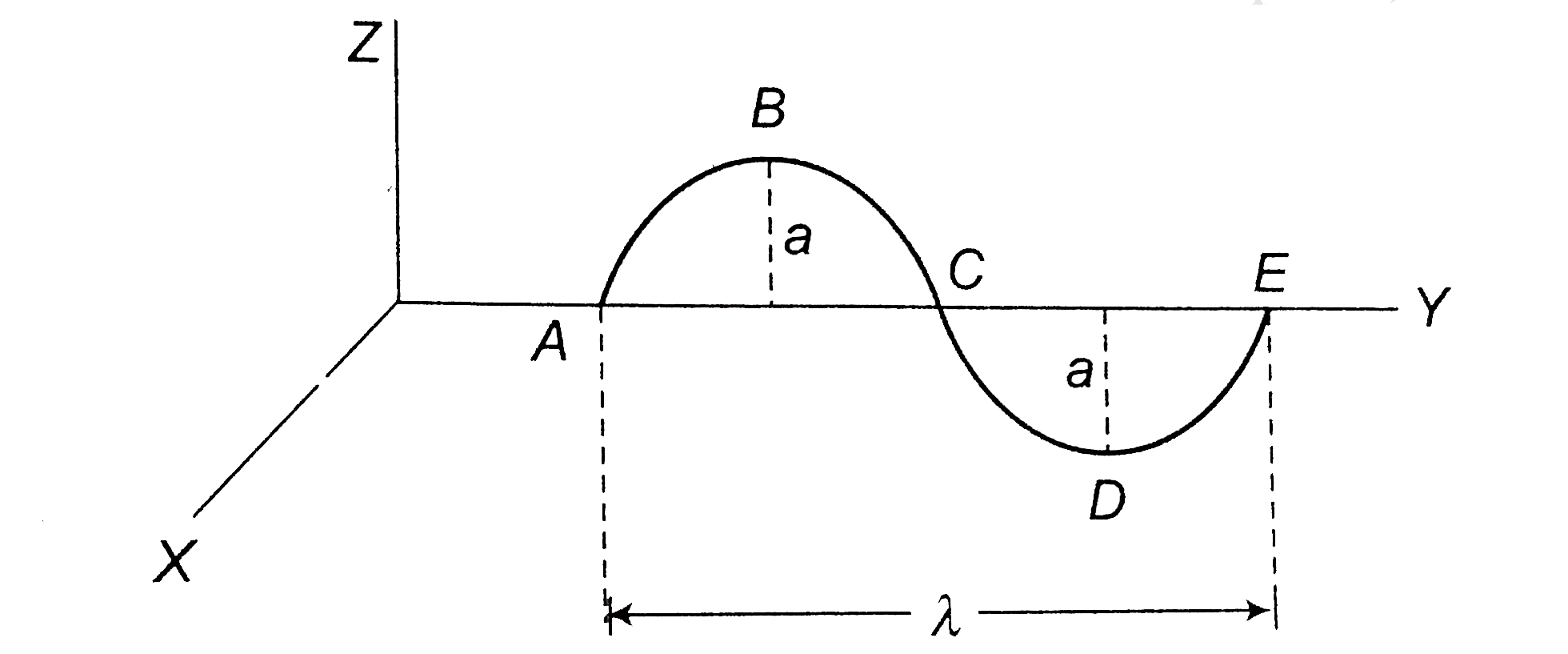The conductor ABCD has the shape shown. It lies in the yz plane, with A and e on the y-axis. When it moves with a velocity v in a magnetic field B, and emf e is induced between A and E .

e = 0, if v is in the y- direction and B is in the x-direction
e = 2Bav, if v is in the z-direction and B is in the x-direction
e = Bλv, if v is in the z- direction and B is in the x- direction
e = Bλv, if v is in the x-direction and B is in the z-direction
The correct Answer is:A, C, D
Topper's Solved these Questions
- ELECTROMAGNETIC INDUCTIONBOOK - FIITJEECHAPTER - ELECTROMAGNETIC INDUCTIONEXERCISE - COMPREHENSIONS - I
5 Videos
- ELECTROMAGNETIC INDUCTIONBOOK - FIITJEECHAPTER - ELECTROMAGNETIC INDUCTIONEXERCISE - COMPREHENSIONS - II
3 Videos
- ELECTROMAGNETIC INDUCTIONBOOK - FIITJEECHAPTER - ELECTROMAGNETIC INDUCTIONEXERCISE - ASSIGNMENT PROBLEMS (ASSERTION REASONING TYPE)
2 Videos
- ELASTICITY AND WAVES BOOK - FIITJEECHAPTER - ELASTICITY AND WAVES EXERCISE - Assignment Problems (Objective) Level-II
15 Videos
- ELECTROMAGNETIC INDUCTION AND AC CURRENTBOOK - FIITJEECHAPTER - ELECTROMAGNETIC INDUCTION AND AC CURRENTEXERCISE - Example
15 Videos
Similar Questions
Knowledge Check

A conductor ABCDE has the shape shown. It lies i the yz plane, with A and E on the y-axis . When it moves with a velocity v in a magnetic field B, an emf e is induced between A and EAe=0 if v is in the y-direction and B is in the x-direction.Be=2Bav, if v is in the y-direcrtion and B is in the x-directionCe=Bλv, if v is in thez- direction and b is in the x-direction.De=Bλv,if v is in the x -direction and B is in the z- directionThe conductor ABCDE has the shape shown. It is lies in the YZ plane, with A and E on the yaxis. When it moves with a velocity v in a magnetic field B , an emf e is induced between A and E . (Choose the incorrect option)
 Ae0 , if v is the y-direction and B is in the x-directionBe=2Bλv , if v is in the y-direction and B is in the x-directionCe=Bλv , if v in the z-direction and B is in the x-directionDe=Bλv , if v is in the x-direction and B is in the z-direction
Ae0 , if v is the y-direction and B is in the x-directionBe=2Bλv , if v is in the y-direction and B is in the x-directionCe=Bλv , if v in the z-direction and B is in the x-directionDe=Bλv , if v is in the x-direction and B is in the z-directionA conductor PQ , with PQ=r , moves with a velocity v in a uniform magnetic field of induced B . The emf induced in the rod is
A(→v×→B).→rB→v.(→r×→B)C→B.(→r×→v)D∣∣→r×(→v×→B)∣∣
A conductor ABCDE, shaped as shown, carries current I. It is placed in the x-y plane with the end A and E on the x-axis. A uniform magnetic field of magnitude B exists in the region. The force acting on it will be

View SolutionWhen there is a_____between a magnet and a conductor, an EMF is induced in the conductor.
View SolutionA conductor ABCDE, shaped as shown, carries current I. It is placed in the x-y plane with the end A and E on the x-axis. A uniform magnetic field of magnitude B exists in the region. The force acting on it will be

View SolutionIf a straight conductor is moved with a uniform velocity at right angle to a uniform magneti field then e.m.f. induced in it is
View SolutionA semicircle loop PQ of radius 'R' is moved with velocity 'v' in transverse magnetic field as shown in figure . The value of induced emf . Between the ends of loop is :-

View Solution
